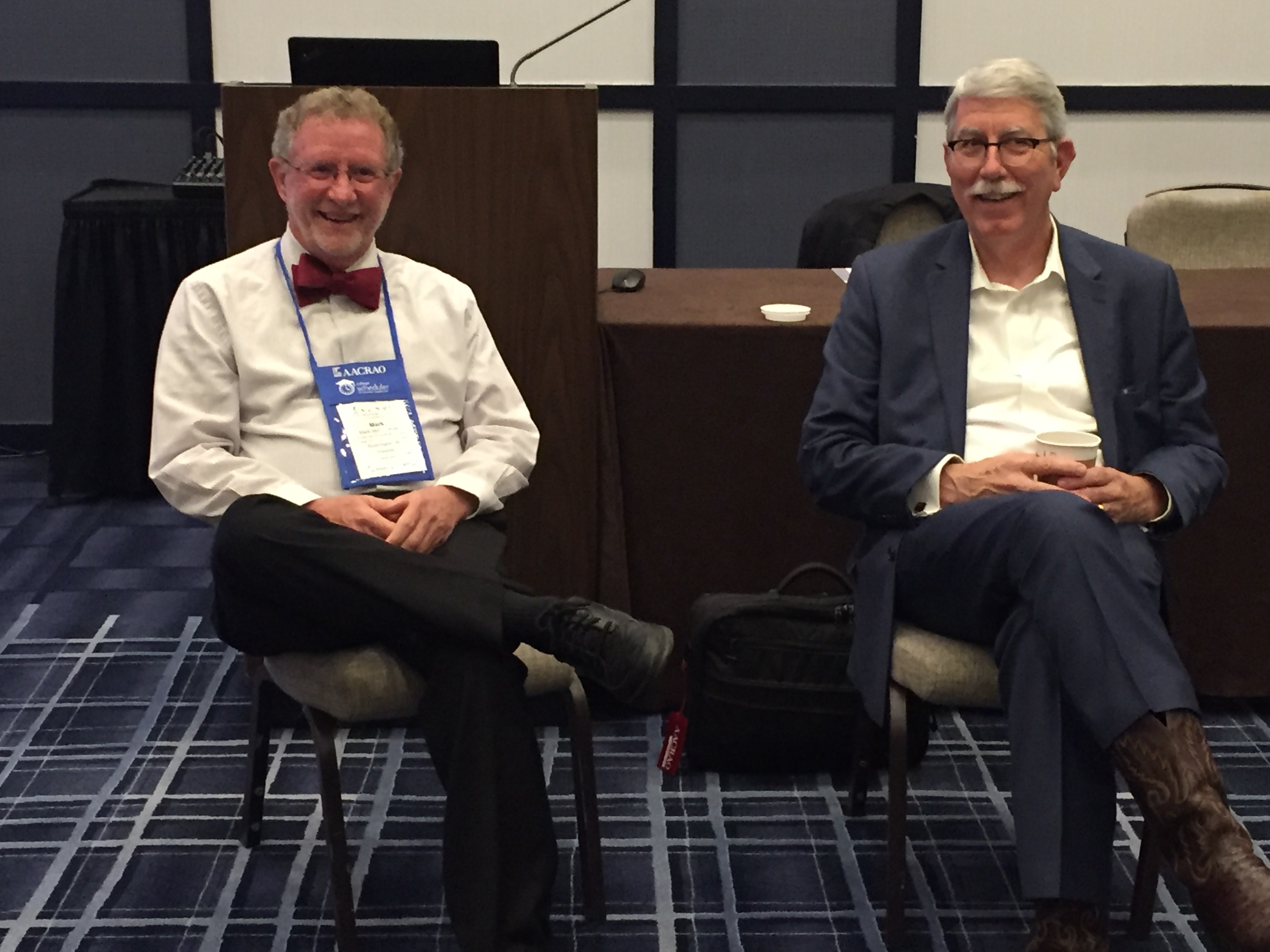 by Clayton Smith, Ed.D., Director, AACRAO Strategic Enrollment Management Conference; Senior Consultant, AACRAO Consulting
by Clayton Smith, Ed.D., Director, AACRAO Strategic Enrollment Management Conference; Senior Consultant, AACRAO Consulting
Thomas Black from John Hopkins University and Mark McConahay from Indiana University-Bloomington presented a wonderful Monday’s end reflective session focusing on the question: Is this the end of the Registrar as we know it?
The session began with a quote from a 1993
College and University article by David Lanier that suggested:
“At one time, the registrar did everything.
Technology can turn the registrar into an invisible entity on campus.
Will the registrar disappear?”
Using the metaphor of the industrial revolutions we have experienced in the last 100 plus years, the presenters traced the registrar’s historical roots through four stages.
Pre-1960s: paper, filing cabinets, electric typewriters/erasers, and copiers;
1965-1990: batch processing/data entry, transactional-based record-keeping, and pin-fed printing forms;
1990s: rise of computing power/prices fall, self service/centralization of service, and reduced need for transactional services; and
2000-2018: ERP/integration, cloud computing, multi-tenant platform.
They also spoke to some of the current issues facing the registrar, including online-instruction, CRM’s, multi-tenant platforms, comprehensive learner records, visual registration planners and student self sovereignty and block chains.
The session concluded with an active discussion as to whether there is a role for the registrar in the future, and, if so, what it might be, which focused around two key questions:
1. How will the registrar work with colleagues on campus?
2. How does the registrar work with consortia institutions, which increasingly will be part of how we deliver registrarial services on campus?
Most agreed that we are in a period of transformation and our roles as registrars are changing. Two comments made by session participants summed it up well:
“I might just redefine what my job is.”
“I am encouraged.”